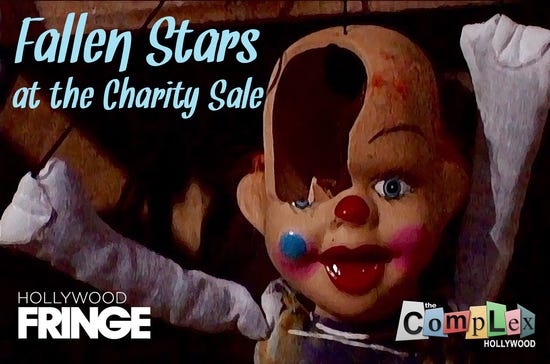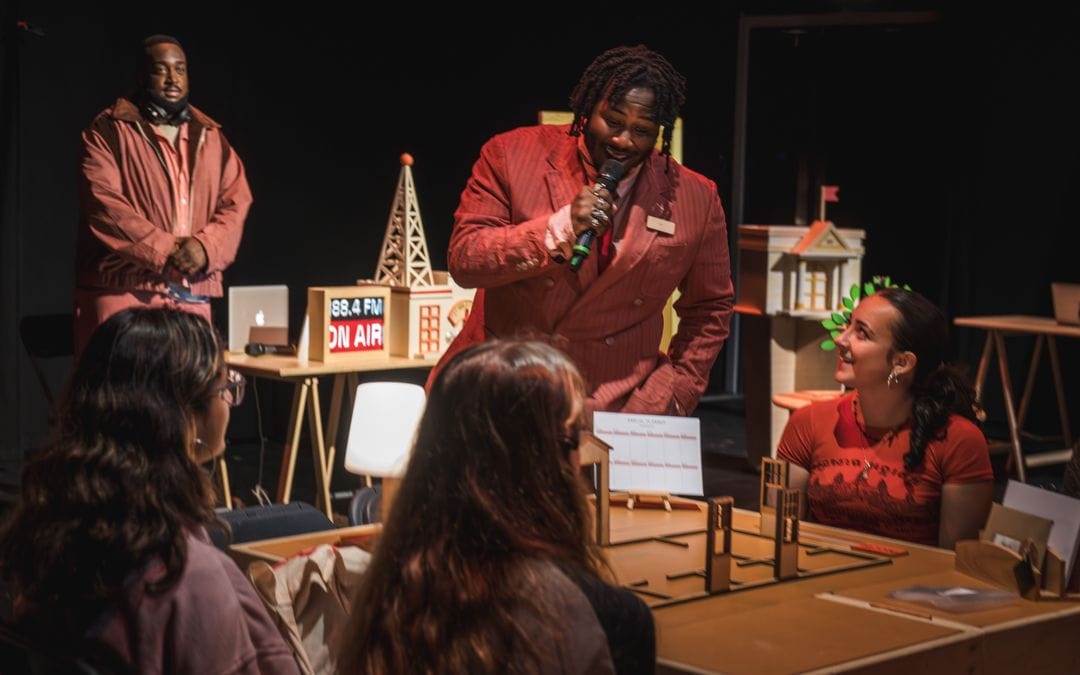
If you’re of a certain age, and of a certain type of nerd lineage the term LARP will bring to mind a set of images. It could be of Goth kids with fangs, oozing attitude and the occasional trickle of fake blood. It could be of Ren Faire clad college students hammering away at each other with PVC piping that’s been covered in foam and duct tape.
I do not write these words with derision, but with a certain air of nostalgia, for I have been both of those individuals and I assure you I looked as glorious as I looked ridiculous. I wouldn’t trade my history of Live Action Roleplaying for anything.
Yet in the past few decades (Ugh, really, you had to go there with the age thing?-ed.) in the frozen lands of the Nordic countries LARP has become larp — a breed of experience that is as interested in the psychological underpinnings of human interaction through the medium of play as it is with the construction of shared consensual hallucinations.
This may seem like a heady lead up to a review of a Hollywood Fringe show about discarded items that are up for auction at a charity sale, but it’s a needful framing to understand what director Aaron Vanek is up to with Fallen Stars at the Charity Sale.
The piece is constructed around the conceit that five actors are playing the inner lives of objects up for purchase. All of them are cast-offs of one sort or the other. They have archetypal roles: the new kid, the old man, the prima donna. (You may have only counted three out of five, we’ll get there.)
Each wants to find a new purpose in life — a new owner — and over the course of the production get the chance to share their history. A grim fate looming for those that aren’t chosen.
But you can’t have a sale if you don’t have buyers, and in this adaptation of the Nordic larp by Martin Nielsen and Magnar Müller, the buyers are the audience. We’re given a random amount of fake money, and a set of instructions about how we’re able to come onstage and into the world of the show — the characters freeze ala Toy Story — and then are allowed to actually purchase the items with our imaginary money.
It’s a strange, but simple enough concept, which plays out emotionally something like the nursery scenes in Toy Story 3. In other words: kind of a bummer, but with a few laughs along the way.
Two structural variables make Fallen Stars different every time. One is a boon, the other a curse that threatens to derail the show every time it is run.
The boon is that each instance of the show allows for the fairly skilled cast to create new backstories for their objects. I can’t tell how much was pre-meditated and how much was improvised about the backstory of the various items up for sale on preview night, but it felt like a fair amount of thought went into the lives of these inanimate objects. Shoshanna Green, as the “new kid”: a Guitar Hero 3 box set, did a particularly great job as the emotional anchor of the piece.
Now here’s where I might get into a character by character breakdown, if there was time, but the second structural variable pretty much nuked that option. That variable is the audience, who have limited agency in Fallen Stars, pretty much just enough to ruin the show for each other and nothing else.
It starts with the necessary recounting of the rules, which happened in perhaps too much detail… or maybe not enough as the first person who got up on stage from the audience pretty much ignored the “no haggling” rule. Armed with fake cash they strolled the stage, complained about the prices, and then stepped down after more or less hamming it up for 90 seconds that felt like five minutes. Despite a “no hamming it up” rule. (Okay the actual rule is #8 “People paid to see the actors, not you. If you are lingering on stage more than two minutes, the Caretaker will prompt you to buy something or move along.” But that means “no hamming it up,” right?)
A short while later, after we were treated to the first backstory, another audience member got up, hammed it up, and promptly bought the broken bicycle pump from which we hadn’t heard much from yet.
Now purchased, the actor speaking for the pump walked off stage never to be seen or heard from again.
With this act the audience took away some of the dynamic possibilities of what followed. I felt especially bad for his two friends who were sitting in the back row with me, who now had to endure 40 minutes of a show they had come to see their friend perform in without their friend.
(Then there’s a whole, uncomfortable and seemingly unintentional layer to this: of watching a young black man speak eagerly about finding a new owner, only to lose his voice once he is purchased by a clueless white man from a world other than his own. Knowing the director’s politics, I’m pretty sure that wasn’t the intent, but it’s a possible subtextual read on the action, and it is horrific.)
A few minutes later it happened again, when another audience member from the same group bought out the teapot before that actor had a chance to do anything.
In the eyes of that audience member, I’m sure they thought they “won.” After all, they now had a teapot. The rest of us, on the other hand, only had one character backstory that we had yet to hear. Luckily we got that before the mortar and pestle was bought out from under us.
Now down to just two actors — and about fifteen minutes of allotted time — those on stage began to try to recount some of the backstories of the other characters. Probably because they had run out of things to say about their own. Then the guy who bought the bicycle pump got back up — another violation of the rules — and tried to return the pump. The most charitable read on that was him trying to get the actor back on stage. But this was not possible. No returns. Just a hellish decent into repetition.
With about 12 minutes left on the clock I tapped a compatriot on the shoulder and borrowed a fake dollar. I was intent on putting us out of our misery. I wouldn’t have had to borrow that dollar save for the random distribution of funds to the audience. Since it wasn’t expressly forbidden to share funds, I wasn’t even technically breaking the rules. (There was a verbal, but unwritten prohibition on couples buying multiple items together while on stage. But the compatriot and I aren’t a couple. If years of Dungeons & Dragons taught me anything it’s how to rules lawyer in a fucking RPG.)
Now armed with just enough to make a purchase, I went up, snatched up the second to last item and put us into endgame.
Or so I thought.
The “Caretaker” — the cast member tasked with managing the audience — called out ten minutes to go.
We were now in a solo show where Ms. Green had to hold her own. With her object prohibitively priced, and no one else seemingly willing to pool cash, she was made to perform solo for a stretch. Ms. Green was up to the task, but it was clear there was no where left for the piece to go. I can’t be sure, but it felt like the production team — thankfully — fudged the timing.
A grim fate awaited Green’s Guitar Hero play set.
Look: I know that it is Vanek’s life mission to get Nordic style larp up and running in Los Angeles. I think it’s a noble mission. Without some serious structural changes this theatrical adaptation isn’t going to be the magic trick that gets people excited about the prospect.
What I saw would actually have been more interesting without the audience interaction layer. Vanek may be a first time director, but he got solid performances out of his cast with some really strange material. He used the space and lighting smartly, without trying to have theatrical artifice get any further in the way of the already complex conceit. But the complexity of the rules and above all else the negative impact of the audience’s agency not so much on the tone but the actual structure of the piece has to be addressed.
I get that Nordic larp often has a reputation for a dark, sometimes nihilistic view on life. Half of the “games” I’ve heard described sound like elaborate mindfucks. What we have here, however, is a structure that pretty much guarantees repetition, vamping (not the sexy kind), and a general malaise.
As this was a preview I think Vanek can fix this at the drawing board. I hope he does.
Fallen Stars at the Charity Sale is part of the 2017 Hollywood Fringe Festival. It plays on June 10, 16, 18, and 24. Tickets are $15, with discounts available for those who bring objects ($5 off) and Fringe participants (Free).
Correction: an earlier edition of this post misidentified Shoshanna Green as Anna Dawahare who in fact played the role of Beady. We regret the error.




















Discussion